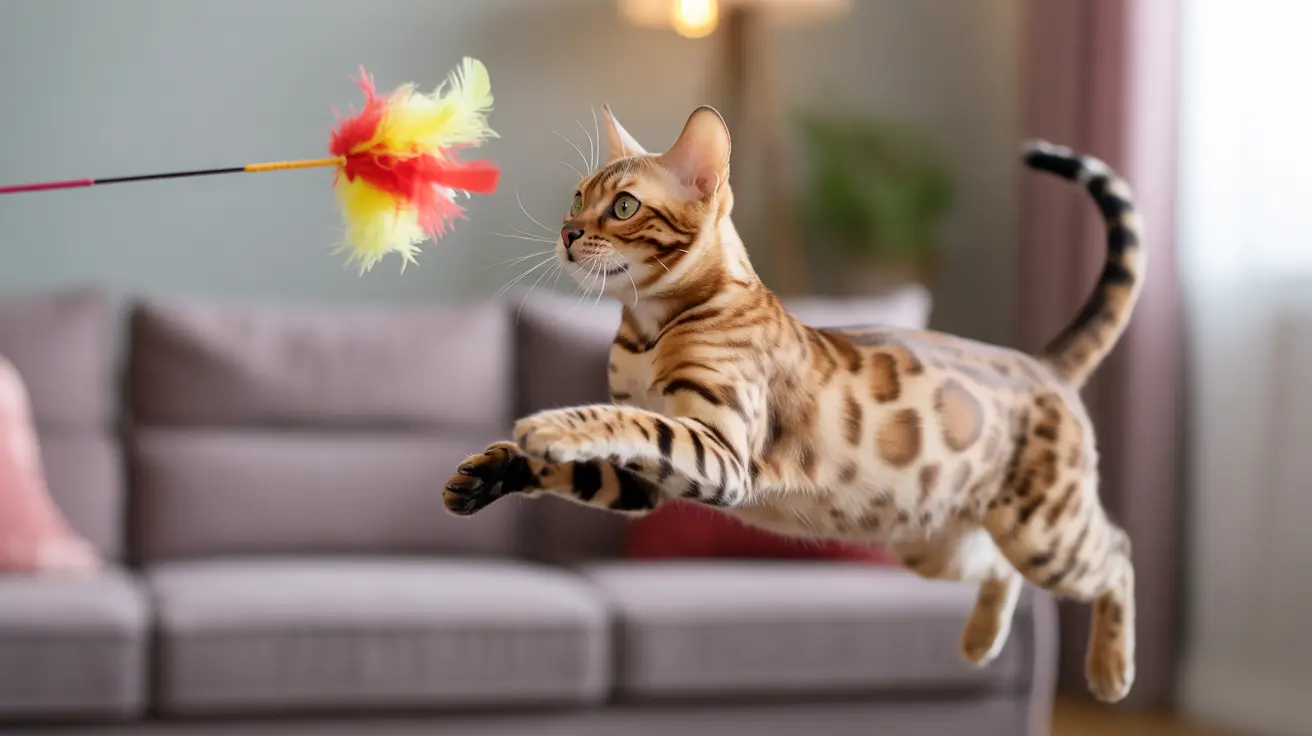Natural Hunting Behaviors and Play
Cats are instinctive hunters, and their play behaviors closely mirror their predatory nature. Even well-fed domestic cats maintain strong hunting instincts that need regular expression through play. Understanding these natural behaviors helps us provide appropriate toys and activities that satisfy their innate drives.
Interactive Toys That Trigger Hunting Instincts
Wand toys, feather teasers, and laser pointers are particularly effective at engaging cats because they mimic the movement of prey animals. These toys allow cats to stalk, chase, and pounce – behaviors that are deeply satisfying to their predatory nature.
Popular Toy Categories for Cats
Self-Play Objects
- Small balls with bells inside
- Crinkle balls
- Toy mice
- Springs and bouncy toys
- Automated moving toys
Environmental Enrichment Items
- Cardboard boxes
- Paper bags
- Empty toilet paper rolls
- Bottle caps (under supervision)
- Crumpled paper balls
Creating an Engaging Play Environment
To maximize your cat's play experience, consider incorporating various elements:
- Vertical spaces for climbing
- Hiding spots for stalking games
- Scratching posts integrated with play areas
- Puzzle feeders for mental stimulation
- Rotating toy selection to maintain interest
Safe Play Practices
While encouraging play is important, safety should always come first:
- Avoid small items that could be swallowed
- Supervise play with string-based toys
- Remove damaged toys promptly
- Choose size-appropriate toys for your cat
- Avoid toys with loose parts or dangerous materials
The Role of Catnip in Play
Catnip can enhance play experiences for many cats. About 50-70% of cats respond to catnip, showing increased playfulness and engagement. Consider catnip-infused toys or occasionally sprinkle dried catnip on existing toys to renew interest.
Frequently Asked Questions
What types of toys do cats prefer that mimic their natural hunting instincts?
Cats typically prefer toys that move unpredictably and mimic prey animals, such as wand toys with feathers, electronic mice, or toys that squeak or chirp. Moving toys that allow cats to stalk, chase, and pounce are particularly engaging.
How does playing with prey-like toys benefit a cat's physical and mental health?
Play with prey-like toys provides essential exercise, helps maintain healthy weight, improves coordination, and reduces stress and anxiety. It also prevents boredom-related behavioral issues and keeps cats mentally stimulated.
Why do cats like to play with their prey before catching or killing it?
This behavior is instinctual and helps cats practice their hunting skills. In the wild, playing with prey helps ensure it's safe to eat and teaches valuable hunting techniques. This behavior naturally transfers to play with toys.
How can I safely encourage my indoor cat's hunting behaviors through play?
Use interactive toys like wand toys or laser pointers (always ending with a physical toy they can "catch"), set up hunting games with hidden toys, and create vertical spaces for stalking and pouncing. Maintain regular play sessions to satisfy their hunting instincts.
What are the signs of play aggression in cats, and how can I prevent it during playtime?
Signs include dilated pupils, tail twitching, flattened ears, and intense focus followed by aggressive pouncing or biting. Prevent play aggression by using appropriate toys instead of hands/feet, maintaining consistent boundaries, and ending play sessions before your cat becomes overstimulated.
Conclusion
Understanding what cats play with and providing appropriate toys and activities is crucial for their overall well-being. By offering a variety of play options that satisfy their natural hunting instincts, you can keep your cat physically active, mentally stimulated, and behaviorally healthy.






